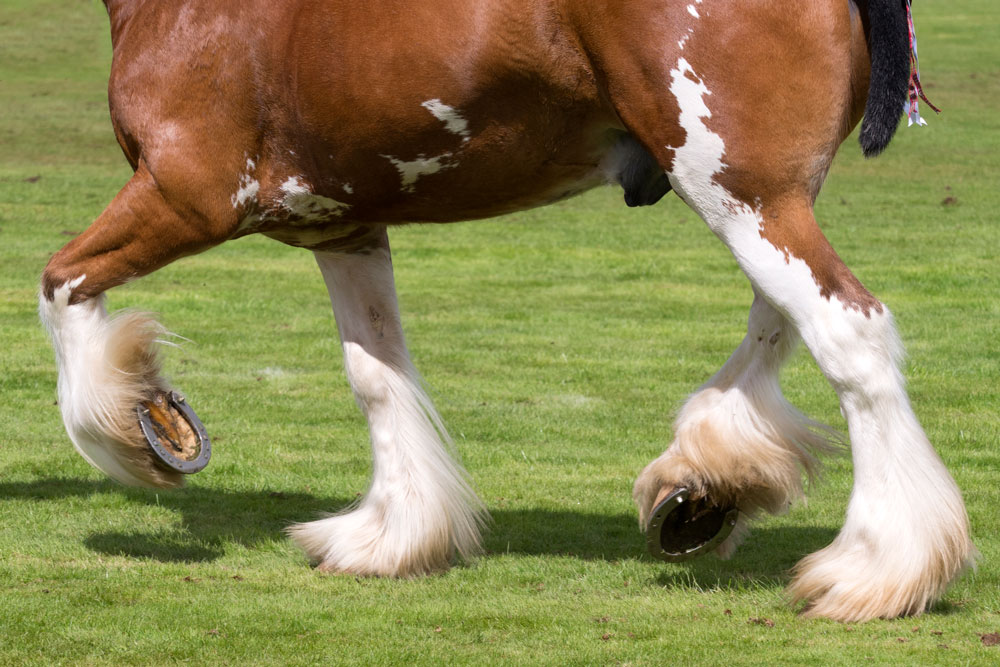
Skin diseases are fairly common in horses, and there are a number of different types of problems, with varying causes—everything from parasites to viruses, fungi, bacteria and allergies. Skin diseases can also vary in severity.
Scratches is the common name for areas of lumpy, weepy and/or crusty skin on the lower legs, especially around the heel and pastern and sometimes up the cannon. Stephen D. White, DVM, DACVD, professor and Chief of Service, Dermatology, School of Veterinary Medicine, University of California, Davis, said this term (and greasy heel) refers to any kind of skin lesion that occurs on the pastern and fetlock areas.
“There can be many different reasons and causes; the most common one we see at our referral practice—in cases that keep recurring—is vasculitis (inflammation of the blood vessels),” he said.
“This is more common in unpigmented (pink) skin, but it can also occur in colored skin,” he added “The cause is not always understood. On rare occasions, it may be due to a drug that was given to the horse, causing the reaction, and sometimes due to photosensitization (seen more often in unpigmented skin than colored skin).”
Photosensitization can be due to liver problems, when the liver is unable to filter out photosensitizing agents from certain plants or toxins. In these situations, exposure to sunlight makes the skin reaction worse. Or, the horse might have a photo-aggravated dermatitis that sets off the vasculitis.
“In many cases we never know what sets it off. In some cases it might extend from the legs to the rest of the body, but that’s relatively uncommon,” he says.
“When confronted with scratches, the veterinarian tries to determine whether the cause is bacterial, fungal or a parasite like chorioptic mites that cause leg mange,” he said. “Or maybe it’s a vasculitis. In draft horses, one of the causes for severe scratches is chronic progressive lymphedema—a genetic problem causing a buildup of lymph fluid in the lower legs. The lymphatic system becomes leaky and lymph goes out through the surrounding skin and triggers an inflammatory reaction. There is unfortunately no cure for that condition. It seems to be genetic because it is much more common in draft horses and in certain family lines. If a draft horse comes into our facility and the complaint is scratches or greasy heel, the two things I am concerned about are chorioptic mange (since draft horses are also more prone to that problem) and chronic progressive lymphedema.”
“Chorioptic mange can now be treated with medications like ivermectin that kill the mites,” White said.
“It is essential to have a correct diagnosis in order to know how to treat a skin problem successfully.”
If the lumpy, crusty skin is caused by a bacterial and/or fungal infection, the proper medications can be administered that will often resolve those infections.


